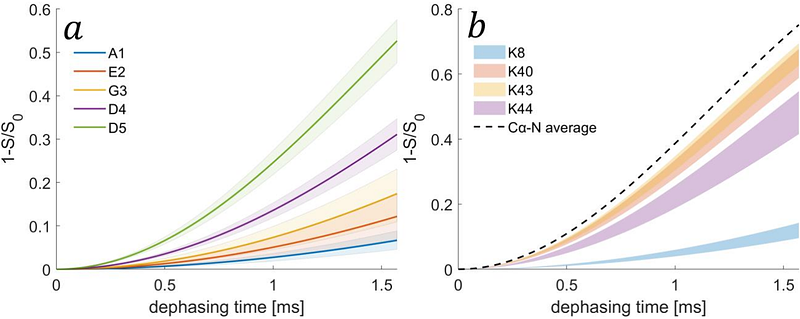Dynamics in the intact fd bacteriophage revealed by pseudo 3D REDOR-based magic angle spinning NMR

Dynamics in the intact fd bacteriophage revealed by pseudo 3D REDOR-based magic angle spinning NMR
Lusky, O. S.; Sherer, D.; Goldbourt, A.
AbstractThe development of robust NMR methodologies to probe dynamics on the atomic scale is vital to elucidate the close relations between structure, motion, and function in biological systems. Here we present an automated protocol to measure, using magic-angle spinning NMR, the effective 13C-15N dipolar coupling constants between multiple spin pairs simultaneously with high accuracy. We use the experimental dipolar coupling constants to quantify the order parameters of multiple C-N bonds in the thousands of identical copies of the coat protein in intact fd-Y21M filamentous bacteriophage virus, and describe its overall dynamics on the sub-millisecond time scale. The method is based on combining three pseudo three-dimensional NMR experiments, where a rotational echo double resonance (REDOR) dephasing block, designed to measure internuclear distances, is combined with three complementary 13C-13C mixing schemes: dipolar-assisted rotational resonance, through-bond transfer-based double quantum / single quantum correlation, and radio-frequency driven recoupling. These mixing schemes result in highly resolved carbon spectra with correlations that are created by different transfer mechanisms. We show that the helical part of the coat protein undergoes a uniform small amplitude motion, while the N-terminus is highly flexible. In addition, our results suggest that the reduced mobility of lysine sidechains at the C-terminus are a signature of binding to the single stranded DNA.


